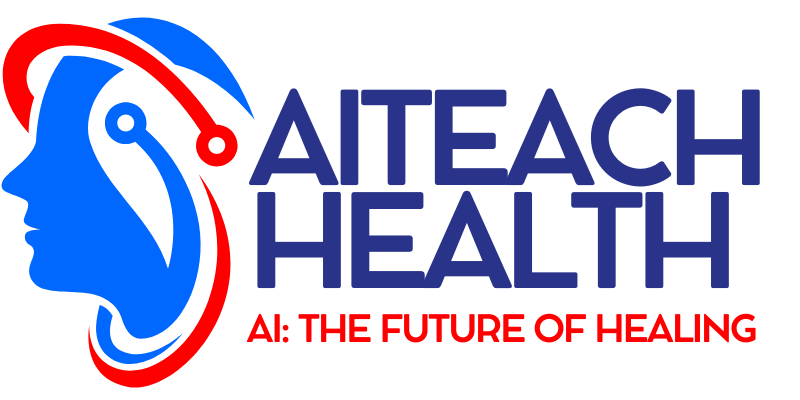Artificial intelligence isn’t just a buzzword — it’s a game-changer for rural healthcare. Through data, machine learning, and automation, AI is widening access and improving outcomes where traditional healthcare systems often fall short. Here’s how it’s reshaping care in underserved communities.
AI-Powered Diagnostics for Faster, More Accurate Care
Rural areas often lack access to diagnostic tools and specialists. AI is filling that gap with technologies such as:
- Image Analysis: AI can interpret X-rays, MRIs, and CT scans as accurately as top radiologists, allowing clinics to diagnose conditions like cancer and fractures without needing a specialist on-site.
- Predictive Analytics: AI uses local health data to forecast disease outbreaks or individual health risks, enabling preventative action.
Case Study: In rural India, mobile apps powered by AI analyze retinal scans for signs of diabetic retinopathy, preventing blindness in regions with no eye specialists.
Smarter Telehealth and Virtual Care
AI makes telehealth more efficient and accessible by enhancing several core functions:
- Symptom Triage: AI chatbots assess patient symptoms and route urgent cases accordingly.
- Language Translation: AI breaks down language barriers for multilingual rural populations.
- Remote Monitoring: Wearables powered by AI track vital signs and notify doctors of abnormalities in real time.
Example: In Australia’s outback, AI-driven telehealth platforms have reduced patient travel by 60% by connecting them directly to urban specialists.
Automating Admin: More Time for Patients
Rural clinics often have limited staff who juggle multiple roles. AI helps by automating tasks such as:
- Medical Record Management: Organizes and retrieves patient data more efficiently than manual systems.
- Appointment Scheduling: Optimizes bookings to reduce delays and no-shows.
- Billing & Coding: Ensures accurate documentation and reduces financial stress on clinics.
AI-Powered Training and Support for Rural Providers
AI equips rural clinicians with tools that bridge the expertise gap:
- Clinical Decision Support Systems: Provide real-time diagnoses and treatment recommendations.
- Virtual Training Simulations: Help providers practice advanced procedures without leaving their clinics.
These tools enable rural health workers to treat cases that would otherwise require transfer to urban hospitals.
Benefits of AI in Rural Healthcare
- Increased Accessibility: Patients get care without traveling long distances.
- Cost-Effective: Reduces operational expenses for underfunded clinics.
- Improved Health Outcomes: Early diagnosis leads to better recovery rates.
- Healthcare Equity: Levels the playing field for underserved populations.
Did you know? A 2023 study found that AI-driven telehealth reduced hospital readmissions in rural communities by 25%.
Challenges and Ethical Concerns
Despite its promise, AI adoption in rural healthcare faces obstacles:
- Limited Internet Access: Many rural areas lack the bandwidth for AI-powered tools.
- Data Privacy: Handling sensitive health data requires strong encryption and compliance with regulations like HIPAA.
- Risk of Dehumanized Care: Overreliance on automation may reduce human connection in caregiving.
Solutions: Invest in infrastructure, enforce strong data protection policies, and integrate AI with human-centered care models.
The Road Ahead: What’s Next?
AI’s future in rural healthcare is full of possibility. Innovations on the horizon include:
- AI-Enabled Mobile Clinics: Equipped with diagnostics and operated remotely in underserved areas.
- Personalized Medicine: Treatments tailored using genetic and lifestyle data.
- Community Health Monitoring: AI analyzes local trends to stop outbreaks before they spread.
As AI becomes more accessible, high-quality healthcare will become a right — not a privilege — for all, regardless of location.
FAQs
Q: How is AI making healthcare more accessible in rural areas?
A: AI improves diagnostics, streamlines administrative tasks, and enhances telehealth, reducing the need for travel and specialists.
Q: Is AI affordable for rural clinics?
A: Yes, AI tools often reduce overall costs, including hospital readmissions and manual labor expenses.
Q: What are the main risks of using AI in healthcare?
A: Risks include data privacy concerns, poor connectivity in remote areas, and overdependence on automation.
Q: Will AI replace rural healthcare providers?
A: No. AI is designed to support, not replace, medical professionals. Human expertise remains crucial.
Conclusion: A Healthier, Fairer Future
AI is not just improving rural healthcare — it’s transforming it. From diagnosis and teleconsultation to training and administrative relief, AI is bridging the care gap. As this technology evolves, rural communities will finally receive the health services they’ve long deserved — faster, cheaper, and fairer.
💬 Join the Conversation
What impact do you think AI will have on healthcare in your region? Share your thoughts in the comments and don’t forget to subscribe to our newsletter for more cutting-edge healthcare insights.



